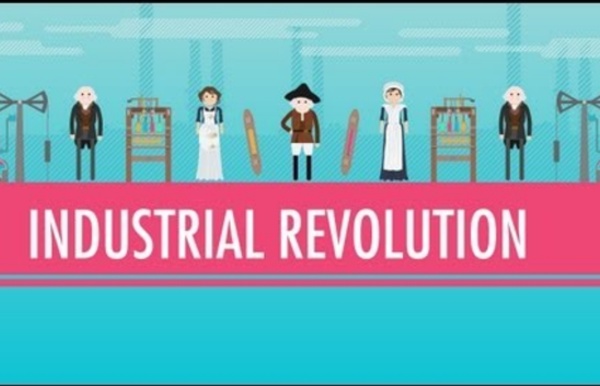



http://www.youtube.com/watch?v=zhL5DCizj5c
Related: Why a colony? • Why a colony? • Upplysning & revolutioner1770s In this decade, Indigenous peoples had rich and complex lifestyles revolving around the land and based on hunting and gathering food and water. They crafted a range of technologies such as shelters, tools, baskets, weapons and vessels for obtaining and carrying food and water. Groups traded with each other for important metals, clays and foodstuffs not available in their own countries. Each group passed their culture, language and beliefs from one generation to the next. The decade was also a time of great change and increasing hostility between the continental European nations and Great Britain.
Australia's migration history timeline Black-eyed Sue and Sweet Poll of Plymouth taking leave of their lovers who are going to Botany Bay, Robert Sayer, 1792. Courtesy National Library of Australia By the 1790s British Investors were purchasing 38,000 slaves a year. Over sixty percent of the world’s slave trade was transported in British ships. Slavery and the feudal farm system were under attack by evangelical reformers who fought for personal liberty and the right of the individual.
Industrial Revolution: Definitions, Causes & Inventions The Industrial Revolution marked a period of development in the latter half of the 18th century that transformed largely rural, agrarian societies in Europe and America into industrialized, urban ones. Goods that had once been painstakingly crafted by hand started to be produced in mass quantities by machines in factories, thanks to the introduction of new machines and techniques in textiles, iron making and other industries. Fueled by the game-changing use of steam power, the Industrial Revolution began in Britain and spread to the rest of the world, including the United States, by the 1830s and ‘40s. Modern historians often refer to this period as the First Industrial Revolution, to set it apart from a second period of industrialization that took place from the late 19th to early 20th centuries and saw rapid advances in the steel, electric and automobile industries. England: Birthplace of the Industrial Revolution
Images from history: Rarely-seen photographs bring 1800s London back to life By Eddie Wrenn for MailOnline Updated: 10:00 EST, 11 August 2009 In the frantic pace of modern life, it is easy to forget our past, and the toils of the generations before us who built the world we live in. But for those familiar with our capital city, these fascinating pictures taken when photography was in its infancy will bring back to life a London which has changed so much over the last 150 years. They capture sweaty, mustachioed long-dead engineers working hard to bring the world's first Underground network to life; they capture the hippo who entertained Londoners and visitors alike during his 30 years' lodgings at Regent's Park; they capture long-past shops and factories; they even capture the construction of one of England's most famous monuments, Nelson's Column, back in 1844. Further afield, there are pictures of Italy, America, Japan and Egypt, all taken more than 100 years ago.
1780s When the War of American Independence (1775–83) ended, Great Britain lost its American colonies and was deprived of a place to dispose of its convicts. During the war, Great Britain could not transport convicts and their numbers had increased significantly. The convicts were jailed in the hulks of old dilapidated warships moored in Plymouth and on the Thames estuary. Pressure to find another site for transportation mounted.
US History: Industrial Revolution for Kids History >> US History before 1900The Industrial Revolution was a time when the manufacturing of goods moved from small shops and homes to large factories. This shift brought about changes in culture as people moved from rural areas to big cities in order to work. It also introduced new technologies, new types of transportation, and a different way of life for many. Punishment 1750-1900 What was the purpose of the punishments used in the period 1750-1900? During the period covered by this Gallery there were serious debates about the purposes of punishment. Many new ideas were tried in answer to the old problem of what to do with those who break the law. Gradually, through this period, the older "shaming" punishments like the stocks and the pillory fell out of use. So did whipping.
Hidden Lives Revealed - Poverty and Families in the Victorian Era Home » Articles : Hidden Lives Revealed - Poverty and Families in the Victorian Era This article by Barbara Daniels gives an overview of the causes and the effects of poverty on poor families and children in Victorian Britain. At the time of writing Barbara is a Ph.D. student with the Department of Religious Studies, at The Open University.
19th Century justice - Victorian Crime and Punishment Catching the Criminal The Victorian period saw great changes in how people were caught, arrested and charged to appear in court. The police force, as we know it today, did not exist until 1856. Before then, most places had only an unpaid parish constable to keep order. ... Witnesses, Lawyers and Juries A person on trial today will have been arrested and charged by the police.
Conditions in the Early 1800's - Victorian Crime and Punishment from E2BN Conditions in the Early 1800's Housing in Bedford With the Industrial revolution at its height, new industries and technologies were transforming everyday life. For the owners of the new factories and businesses, the opportunities seemed endless, bringing new wealth and influence.
Industrial Revolution - Facts & Summary The textile industry, in particular, was transformed by industrialization. Before mechanization and factories, textiles were made mainly in people’s homes (giving rise to the term cottage industry), with merchants often providing the raw materials and basic equipment, and then picking up the finished product. Workers set their own schedules under this system, which proved difficult for merchants to regulate and resulted in numerous inefficiencies.